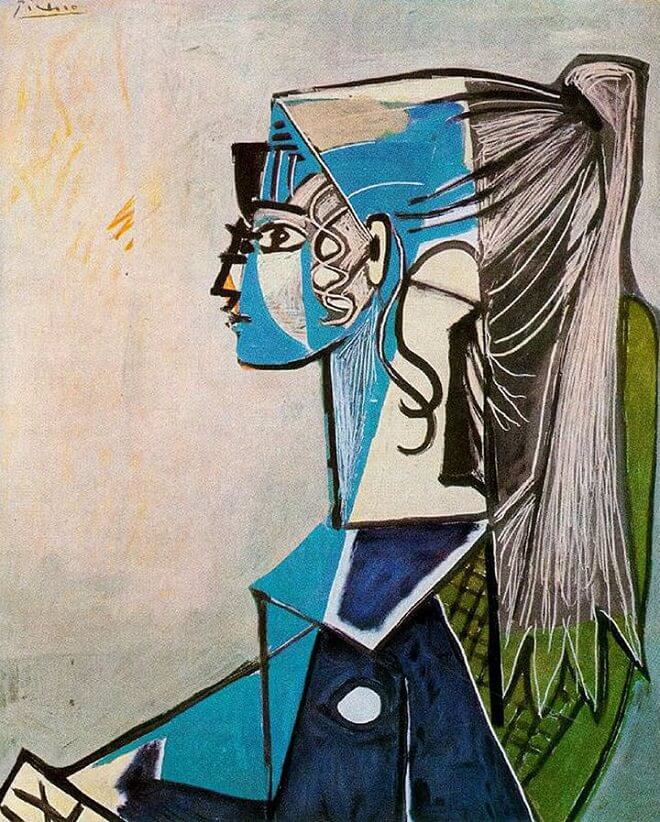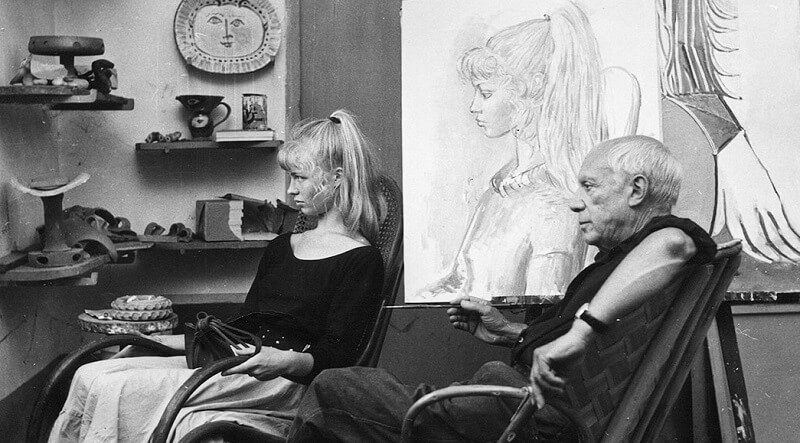Sylvette, 1954 by Picasso

Sylvette is the title of the portrait of a young woman with the ponytail painted by Pablo Picasso. The model for the painting was (Lydia) Sylvette David, also known by her married name Lydia Corbett, a French woman who worked in a pottery studio near Picasso's studio in Vallauris, in the summer of 1953. Picasso created 40 works inspired by her. As the inspiration for some of Picasso's most famous paintings, Lydia Corbett's was the face that launched a thousand French ponytails.
There was a time when Sylvette David was at the center of a media storm and breaking hearts throughout Europe. But, at just 19, she was so timid that she didn't enjoy her power. With her grave beauty and tumbling blonde hair tied in a coquettish ponytail, she caught the eye of Pablo Picasso in 1954 and, for three months, became his muse: the subject of over 40 of his paintings, drawings and sculptures.
To Sylvette, though, her looks were a matter of deep discomfort. She used to cloak her body in long skirts or men's clothes, unaware of the erotic tension of her feminine grace within such masculine garb. 'I had this gorgeous hair and, like Coco Chanel, I used to tailor a man's shirt or jacket to fit me. I was like an iceberg. You couldn't get close to me. They didn't dare come near me, the men. That was why Picasso was intrigued.'

Unlike so many of his muses, Sylvette held Picasso at arm's length and did not succumb to his attempts at seduction. In return, he extended to her a delicacy he rarely showed the women in his life. 'I was terrified he'd ask me to pose in the nude but he was very sensitive to this. He saw I didn't like myself and wanted to know why.' She did not tell him. 'That's why he painted me like that.' She gestures towards a photograph of a painting on the wall. 'Without a mouth. That painting is in America. I was invited to San Antonio to see it.' The curators asked her, 'Why no mouth?' She replied airily, 'Oh, I didn't speak much.'
Picasso's grandson Olivier Widmaier Picasso told the Chicago Sun-Times in 2004 that Sylvette was also the subject of the monumental Chicago Picasso, which had been a matter of curiosity since it was unveiled.
















